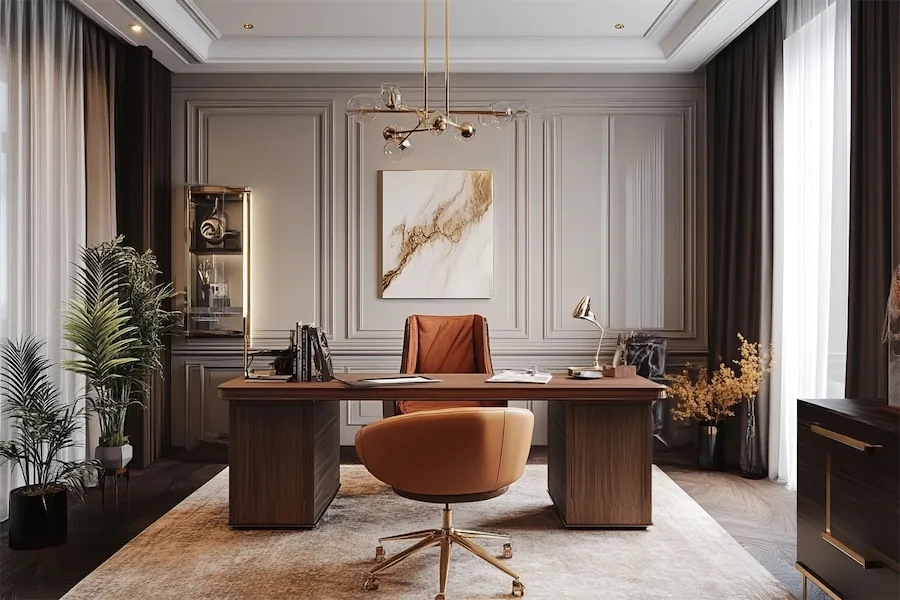Neo-Classical office rooms blend the grandeur of classical architecture with the functionality required for modern workspaces. This article delves into their origins, defining characteristics, applications, considerations for selection, and their relevance in today’s design landscape.
Introduction to Neo-Classical Office Rooms
Neo-Classical office rooms draw inspiration from the architectural styles of ancient Greece and Rome, emphasizing symmetry, proportion, and the use of classical elements such as columns and decorative moldings. These spaces exude elegance and timelessness, making them a popular choice for corporate environments seeking to convey stability and sophistication.
History and Origins of Neo-Classical Office Rooms
The Neo-Classical design movement emerged in the mid-18th century as a reaction against the ornate Rococo style, advocating a return to the simplicity and grandeur of classical antiquity. Incorporating Neo-Classical elements into office spaces became prevalent in the 19th and early 20th centuries, especially in institutional and governmental buildings, symbolizing power and democracy. This architectural approach has experienced revivals, influencing contemporary designs that seek to merge traditional elegance with modern functionality.
Key Features of Neo-Classical Office Rooms
- Symmetry and Proportion: Balanced layouts with harmonious proportions are fundamental, creating a sense of order and stability.
- Classical Elements: Incorporation of columns (Doric, Ionic, or Corinthian), pilasters, and decorative moldings adds grandeur and historical reference.
- Muted Color Palettes: Utilization of neutral tones such as whites, creams, and soft pastels to evoke a serene and dignified atmosphere.
- Luxurious Materials: Use of high-quality materials like marble, rich woods, and fine textiles to enhance the opulence of the space.
- Ornate Furniture: Selection of furniture pieces with classical motifs, such as claw-foot chairs and inlaid wood tables, to complement the architectural elements.
Applications of Neo-Classical Office Rooms
Neo-Classical design is often chosen for its ability to merge historical elegance with modern convenience, resulting in interiors that feel both grand and welcoming. In interior design, Neo-Classical elements can be seen in various settings, including:
- Corporate Offices: To convey a sense of tradition and stability.
- Law Firms: To reflect authority and professionalism.
- Government Buildings: To symbolize democracy and enduring values.
- Luxury Hotels: To provide an ambiance of elegance and refinement.
- High-End Residences: To showcase sophistication and timeless design.
Incorporating Neo-Classical elements into these spaces can be achieved through architectural details, furniture selection, and the use of appropriate color schemes and materials.
Considerations When Choosing Neo-Classical Office Rooms
When selecting or designing a Neo-Classical office space, consider the following:
- Space Requirements: Ensure the room can accommodate the grand scale often associated with Neo-Classical design elements.
- Budget Constraints: High-quality materials and intricate details can be costly; plan accordingly.
- Integration with Modern Amenities: Seamlessly incorporate contemporary technology and office equipment without compromising the classical aesthetic.
- Maintenance: Luxurious materials may require regular upkeep to preserve their appearance.
- Cohesion with Brand Identity: Ensure that the opulent and traditional nature of Neo-Classical design aligns with the company’s image and values.
Conclusion
Neo-Classical office rooms offer a unique blend of historical elegance and modern functionality, creating environments that are both inspiring and dignified. By understanding their origins, key features, and applications, businesses and designers can make informed decisions to create spaces that reflect timeless sophistication and meet contemporary needs.
